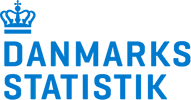SLOVENIA – Migration and demographic patterns in Central-Eastern Europe
This report is a part of deliverable “D.6.2. Report on migration and demographic patterns in the EU CEE countries and potential source countries” from the project FUME – Future Migration Scenarios for Europe (870649), financed with the Horizon 2020 programme. In particular, this country report focuses on critical analysis of migration data from Slovenia, and in particular - immigration data. The analysis consists of an overview of stock and flow data on migrants including such dimensions as age groups, gender, country of origin, types of permits and length of residence. This report is a first step in analytical task which aims to determine migration potential from and to Slovenia and furthermore, to provide necessary data input for fine-tuning of FUME migration projection model.
Slovenia is a post-communist country with a long history of emigration and a relatively new waves of immigration from both within and outside of Europe. Prior to the declaration of independence from Yugoslavia in 1991, the country’s migration trends resembled to a large extent those of other Southern and South-European states. Mainly economically-driven, but also in many periods also politically, Slovene emigrants used to leave their ethnic lands since the mid-nineteenth century and settled abroad - mostly in Western Europe but also overseas, in North and South America, Australia and many other countries. In 1980s, when Slovenia was already also an immigrant country, emigration trends slowed down until 2004, when the accession to the European Union open new pathways and opportunities for potential migrants. Contemporary Slovenia is among the few countries in the region with an increase in population when compared to the period when the communist era ended in Europe. That demographic increase, observed especially after 2017, is largely attributed to immigrants who come to Slovenia mostly for work, but also for family reasons and education. Most of immigrants come from the countries of former Yugoslavia.
This report presents the historical framework of migration transformation in Slovenia, diaspora dynamics and major national groups of immigrants and their demographic structure. It also provides critical analysis of the validity of the main statistical data sources, and suggests migration scenarios for the future.









